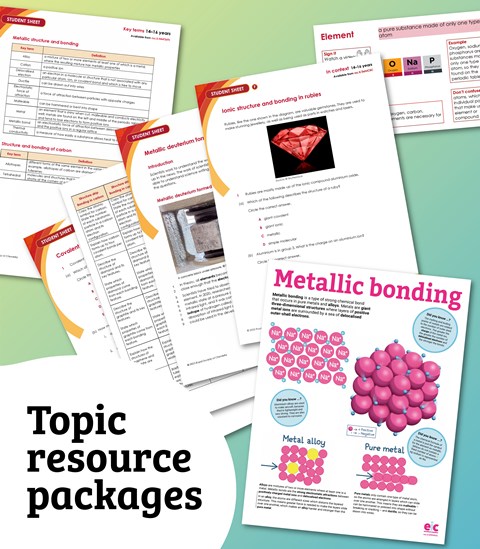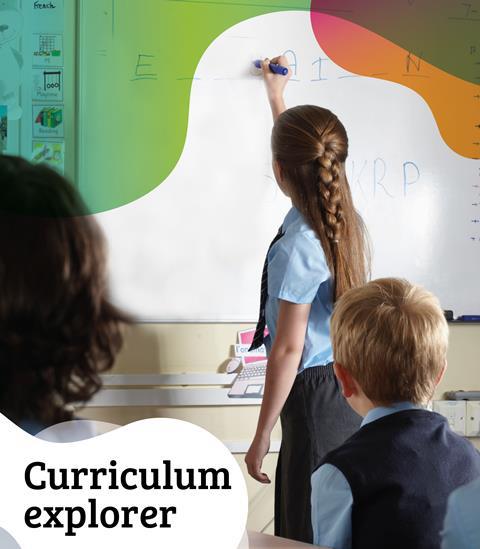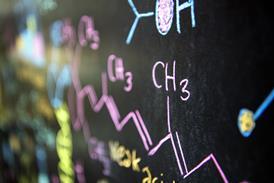
Kristy Turner
Kristy Turner is a school teacher fellow at University of Manchester/Bolton School, UK.
Kristy uniquely splits her time between teaching chemistry at the University of Manchester and Bolton School. She was the Royal Society of Chemistry school teacher fellow 2011–12 at the University of Manchester and has a range of experience teaching in state and independent schools in the north-west of England.
Kristy is the author of the popular RSC resource Starters for Ten. She is an active member of the chemistry education community and has research interests in assessment, development of conceptual models within curriculums and transition between school and university level chemistry study.
 Ideas
Ideas5 ways to teach neutralisation and pH
Teacher-tested approaches to build 11–14 students’ basic understanding of acids, alkalis and indicators
 Ideas
IdeasWays to teach atoms and ions
Use these six approaches to ensure learners master ion formation at 14–16
 Ideas
IdeasWays to teach formation of salts
Secure your learners’ understanding of this core topic with teacher-tested recall strategies and experiments
 Resource
ResourceSolutions | Structure strip | 11–14 years
Support learners to retrieve information and write about solutions
 Resource
ResourceStates of matter | Structure strip | 11–14 years
Support learners to recall and write about the properties of solids, liquids and gases
 Resource
ResourceDiffusion | Structure strip | 11–14 years
Use scaffolded prompts to support learners to write about diffusion
 News
NewsExam board issues unprecedented statement about the inductive effect
What implications will this have for the curriculum and for teachers?
 Ideas
Ideas5 ways to teach excess and limiting reagents to 14–16 learners
Tips for helping learners get to grips with this tricky part of quantitative chemistry
 Resource
ResourceChanges of state | Structure strip | 11–14 years
Use scaffolded prompts to support learners to write about changes of state
 Ideas
IdeasWays to teach the mole at 14–16
Use these four ideas to effectively teach and contextualise this crucial chemistry unit
 Opinion
OpinionDoes rewarding good behaviour deserve a gold star?
Using commendations to encourage positive behaviour can have an impact beyond the chemistry classroom
 Ideas
Ideas4 ways to teach the law of conservation of mass
Improve 11–14 year-old learners’ understanding of this fundamental chemistry topic
 Poster
PosterAll you need to teach titration effectively
Help your post-16 learners grasp the titration method with this poster, fact sheet and practical example
 Ideas
Ideas5 ways to teach reactivity of metals at 14–16
Use the importance of metal extraction to help contextualise this topic
 Ideas
Ideas4 ways to teach redox in terms of electrons
Use these teacher-tested approaches to help learners gain a deeper understanding of redox reactions
 Resource
ResourceParticle diagrams | Structure strip | 14–16 years
Support learners to describe and evaluate the particle model for solids, liquids and gases with this writing activity
 Ideas
Ideas5 ways to use structure strips to scaffold learning
Boost your students’ ability to digest topics and write independently with these margin-sized prompts
 Resource
ResourceAtoms and ions | Structure strip | 14–16 years
Support learners to recall and write about ion formation and factors that affect it
 Resource
ResourceStructure of the atom | Structure strip | 14–16 years
Support learners to recall and write about the properties of subatomic particles and the structure of an atom
 Poster
PosterMastering titration apparatus
Use this poster, fact sheet and classroom activity to show learners the names and uses of equipment they’ll encounter in this practical











